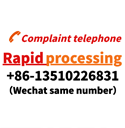Halogen introduction
The halogen fluoride (F), chlorine (Cl), bromine (Br), iodine (I), astatine (At), referred to as halogen. Due to astatine radioactive elements, so people often say that the halogen only refers to: fluorine, bromine and iodine. Halogen chlorine, widely used in flame retardant, refrigerants, solvents. Organic chemical raw material, pesticide, bleach, wool degreasing.
Halogen control requirements from the beginning of the PCB industry, now gradually extended to more products and in the field, from industry associations and Brand Company. Although there is no direct legal mandatory control, but in order to buyer oriented supply chain, are often required for enforcement.
Different industry standards and internal standards may be different requirements for halogen, generally according to specific enterprise standards requirements to determine the specific need to control halogen materials or components
Test method:
1. halogen XRF rapid detection of 2. halogen elements chemical test 3. specific halogen organic chemical test 4. halogen whole machine verification 5.PVC component analysis
The halogen control in the general industry is 2 kinds of chlorine (Cl) and bromine (Br) elements. The specific limits are shown in the following table:
|
standard
|
Limits of Hazardous Substances
|
scope
|
|
|
(Cl)
|
(Br)
|
(Cl)+(Br)
|
|
|
IEC61249-2-21
IPC-4101C
JPCA-ES01-2003
|
≤900ppm
|
Cl≤900ppm
|
≤1500ppm
|
Mainly for PCB boards or their substrates
|
|
JS709A
|
≤900ppm
|
Cl≤900ppm
|
≤1500ppm
|
PCB board in electronic products
|
|
|
<1000ppm (if derived from CFRs, PVC or PVC copolymer)
|
<1000ppm (if derived from BFRs)
|
/
|
Plastic materials (excluding PCB laminates) in electronic products
|





 Location:
Location:









